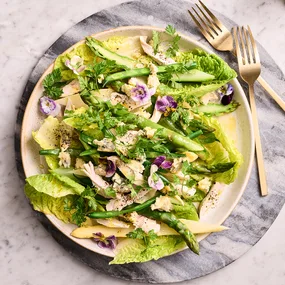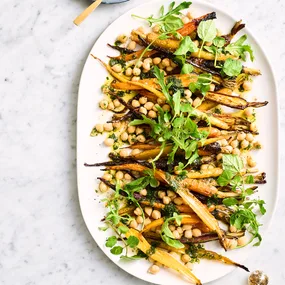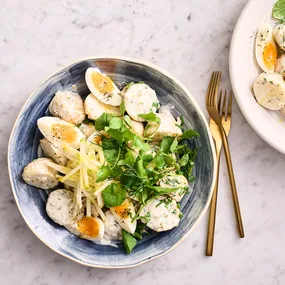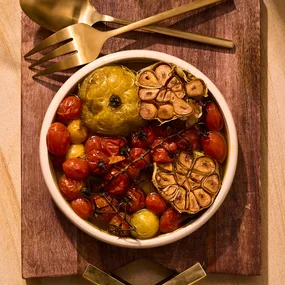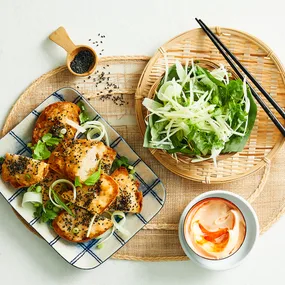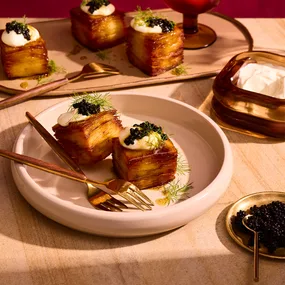“For dreamers and truffle ‘rustlers’,” writes Paula Wolfert, in The Cooking of Southwest France (Wiley). “Here’s a dish you’ll remember all your life.” We reproduce her recipe here with minor GT style changes.
“Those who wish to lead virtuous lives had better abstain.” Or so the classical French thinking goes on the subject of truffles. Me, I’m already past the point of no return. It started, as so many of these things do, with Colette. Not the Lycra-loving ’80s pop chanteuse, the saucy French writer. Her view was that if you couldn’t have truffles in plentiful supply, they weren’t worth having at all. “If you love her,” she wrote, “pay her ransom regally, or leave her alone.” Here, I thought, was a bisexual French novelist after my own heart.
Colette goes on to describe her preferred method of preparing truffles. None of this fine-shaving nonsense. No. “Eat her like the vegetable she is, warm, served in sumptuous portions. She will not give you much trouble; her supreme flavour scorns complexity and complicity.” You had me at “eat her”.
I first came across these electrifying words (they’re from the 1958 collection Paysages et Portraits) reading The Cooking of Southwest France. An interlude from the likes of Colette is perfectly typical of the erudition Paula Wolfert displays in all her work (if your kitchen doesn’t contain Southwest France or her other masterwork, Moroccan Cuisine, you cannot truly be said to be a connoisseur of cookbooks).
In the same passage, Wolfert relates her own experience of eating Périgord truffles whole – in the Château de Castel-Novel in the Corrèze, where Colette spent some of her latter days, no less.
“It was baked in a salt crust and served on a doily. The waiter cracked the salt crust open with a small mallet, releasing the powerful, penetrating bouquet. I sliced the truffle myself and ate it on toast, with a light sprinkling of walnut oil and a pinch of salt. As I ate I sipped a glass of Médoc.”
And so it was that I came to be obsessed by the idea of eating whole truffles. And just a few months ago, when opportunity knocked, I leapt. I was talking to Josh Rea, proprietor of Gourmet Life, that culinary cave of wonders in Darling Point in Sydney’s eastern suburbs. Rea happens to be one of the biggest players in the truffle game, moving a serious volume of black and white truffles from France and Italy to the kitchens of restaurants and ambitious home cooks around the country. I told him of my obsession and, his interest piqued, he agreed to divert some of his next shipment of Périgord black gold to do the experiment.
Fast-forward to Rea and I meeting at Pinbone, in Woollahra, where chefs Jemma Whiteman and Mike Eggert kindly cede their kitchen to us to plunge into what will be either a bold step into deliciousness, or a very expensive culinary mishap. Rea has brought a box of truffles fresh from the airport and, per Wolfert’s recipe, we pick out four specimens, each about the size of a golf ball, around 40 grams each, which Rea estimates would together fetch in the vicinity of $650 in his store.
We wrap them in lardo, then encrust them in a layer of salt bound with eggwhites and give them half an hour in a hot oven. They come to the table enveloped in a completely beguiling scent a bit like a musky meringue. The eggwhite on the salt crust is a good dark-golden colour.
Eggert does the honours, cracking the crust and peeling away the backfat. Inside, the cooked truffles are juicy and springy. As he cuts into one, a little dark juice oozes from the centre. The slices have a glassy sheen, glossy on the outside from the pork fat, and the texture is somewhere between roast beetroot and braised mushroom. The lardo they’ve been cooked in has become an exotic delicacy, deeply infused with the flavour of truffle.
I’ve got some wine handy. Keen to follow the recipe to the letter, I wanted “a good bottle of Médoc”, but that covers a fair bit of ground, so I’d called a few of the savvier sommeliers in town, asking them what they thought would fit that description and work well with the dish. I ended up taking the advice of Nick Hildebrandt from Bentley, buying some claret with a bit of age on it at auction. The ’88 Beychevelle looks perfumed, lush and highly drinkable.
The moment of truth arrives. We put the slices of truffle on hot toast, dress them with salt and French walnut oil from a freshly opened container. Time for a bite.
Relief. It’s good. Very good, in fact, and quite unlike any truffle dish any of us have had before. But is it great? Have we just cooked a $650 mistake? Deviating from the recipe, we try the truffle toast topped with the lardo it was cooked in: amazing.
We play around a bit more. On toast, the browned flavour of the bread crust competes rather than complements. Fingers of untoasted bread are more like it, not least for reasons of textural contrast, with salted butter. Our walnut oil, from a leading producer, A l’Olivier, is straight off the plane from France (thanks, Josh), delicious, but I’m not convinced it’s necessary. Tried on their own, too, and eaten simply in pieces as they are, the truffles taste like a particularly delicious vegetable. Particularly delicious, and very, very expensive.
The wine makes an essential contribution. As chef Eggert points out, the earthiness of aged Bordeaux chimes nicely with the truffle.
I wouldn’t say no to a good Burgundy here, though, or a Piedmontese barbera (Eggert suggests Olek Bondonio).
Served as an entrée at a dinner party, or the showstopper for a light winter supper – salumi and fruit, hot roast truffles, a good salad of bitter leaves, a large cheese and plenty of wine – it’d be a stunner.
The true allure of the truffle, Wolfert says, can be hard to understand if you’ve only tasted a little bit in a pâté or a sauce. “But if, at least once in your life, you take Colette’s advice and eat a Périgord truffle as a vegetable, then you, too, may begin to rhapsodise.” Consider this my rhapsody.

